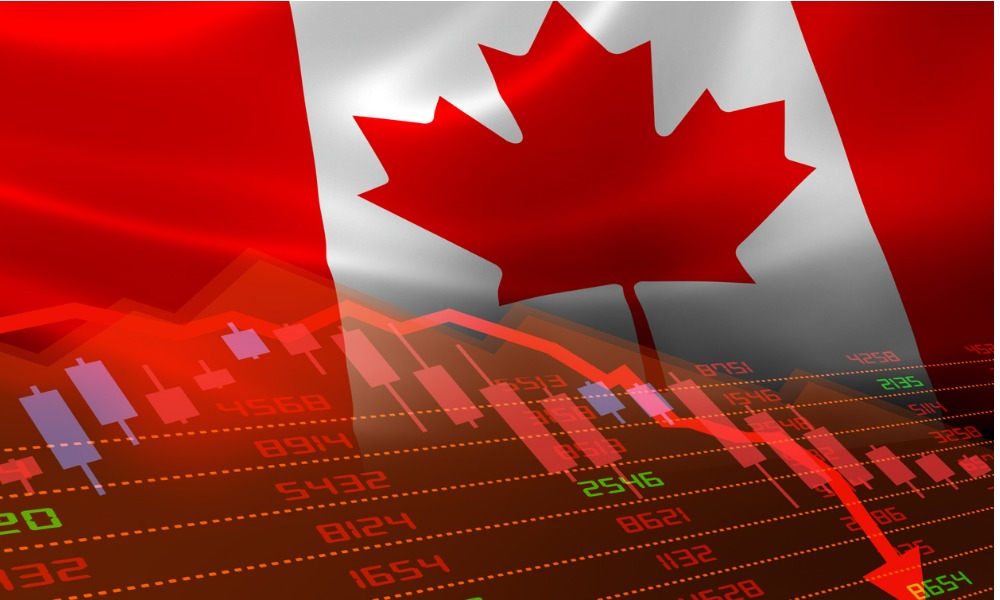Senior investment strategist at Vanguard Canada unpacks whether double-digit youth unemployment could be a canary in the coal mine for the Canadian economy

Perhaps the most worrying piece of economic data to emerge in Canada over recent months is our youth unemployment rate. Our topline unemployment rate hovering around seven per cent — a nine-year high excepting the pandemic — but youth unemployment is more than double that, sitting at 14.2 per cent. It’s a signal of potentially worrying future performance for the Canadian economy.
Ashish Dewan, Senior investment strategist at Vanguard Canada, explained what that high youth unemployment number tells us about the state of the Canadian economy today and the risks that it could pose for the future. He outlined how and when that trend might be impacted by new government initiatives and what the wider economic picture means for Canadian assets. In answering the question of why youth unemployment is so high right now, he emphasized what has become the word of the year: uncertainty.
“I think what has driven the youth unemployment rate up in Canada is uncertainty,” Dewan says. “If there's more uncertainty companies are just more receptive to hiring people who have a longer track record, who have the work experience. They are a little bit less open to hiring new entrants in the market who are maybe less experienced.”
That uncertainty-induced hiring pause — largely a product of unclear US trade policy — has potentially long-term negative impacts on the Canadian economy in Dewan’s view. For one, he notes that this underemployed cohort of 15 to 24 year old’s could be missing out on incredibly valuable work experience in their formative years, resulting in poorer career performance in later years and limited ability to grow in the job market. Dewan notes, too, that the average duration of unemployment has risen from around 18 weeks to 22 weeks, a troubling rise that could see more job seekers discouraged.
Dewan ties some of the more worrying news on unemployment to other troubling metrics like a rise in credit card utilization among Canadians. He also highlights significant layoffs in a number of industries, especially in Ontario colleges where thousands have lost their work as a result in steep declines in the number of international students. He expects young people may also see their tuition costs increase as these institutions look to offset lost international student revenue.
A resolution to the uncertain state of affairs currently plaguing Canada’s labour market may rest on what happens in early August when a deadline for a US/Canada trade deal is hit. Clarity around tariffs and the return of USMCA trade negotiations should, in Dewan’s view, offer more guidance for businesses as to whether they can start hiring again. Sectoral tariffs on key exports to the US like aluminium and softwood lumber could also prove instructive, especially if the US pulls back on those tariffs to bring down the price of key imports. On the whole, Dewan expects more of a resolution to come “fairly soon.”
The Canadian Federal government has also striven to encourage growth and employment through initiatives like the dismantling of interprovincial trade barriers and the easier approval of large-scale projects. While Dewan expects those initiatives will have a positive impact on the economy, he notes that we will likely not see that in data until 2026.
Despite these significant economic overhangs, Dewan remains constructive on Canadian assets. Given Canadian equities’ tilt towards utilities, energy, and financials and those sectors’ value characteristics, Dewan sees greater room for performance relative to the US markets’ skew to growth. Even though those US growth names have been most closely associated with the rise of AI, Dewan argues that if this technology is really as transformative as many have claimed we should see AI driving value for companies in almost all industries, rather than in the concentrated tech sector. Moreover, markets tend to see through the valley and Dewan expects that better medium and longer-term outlooks should continue to drive Canadian asset performance in the future.
The trouble, for advisors, is conveying that relative optimism about Canadian assets to clients who are reading more difficult economic news, or even seeing their children struggle to find work. In those situations Dewan says advisors can lean on what Vanguard calls the “3B mental model” that takes into account the business models that their firms operate under, the biology of their clients’ response to negative stimulus, and managing behaviour that emerges as a result of both business models and biology.
“For advisors, we'd say, really communicate with your clients regularly. Be proactive, especially during periods of market stress,” Dewan says. “Have empathy with your clients, you know, educate them on risk premiums so when we see a lot of market volatility it's a good time for investors, in a way, because the risk premium starts to increase, which can have an impact on really staying invested in the market.”


